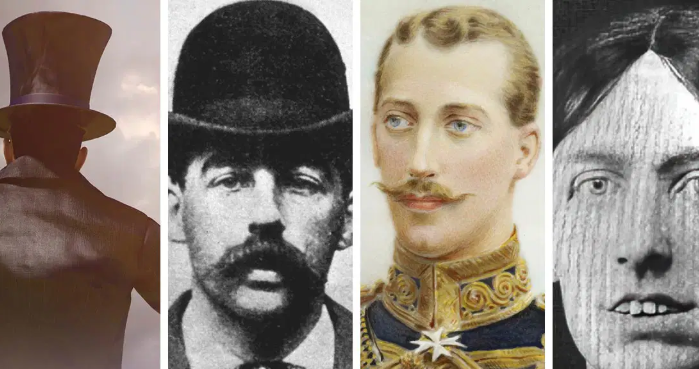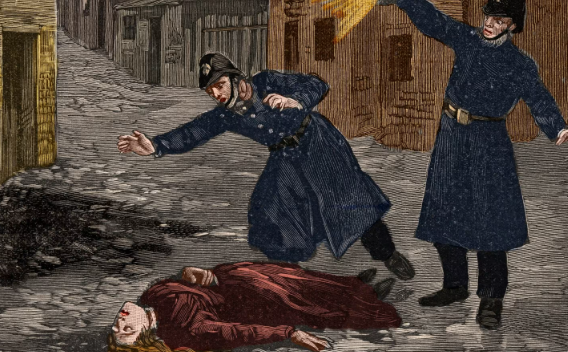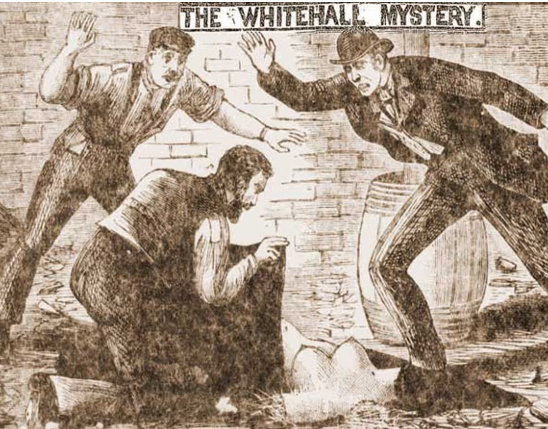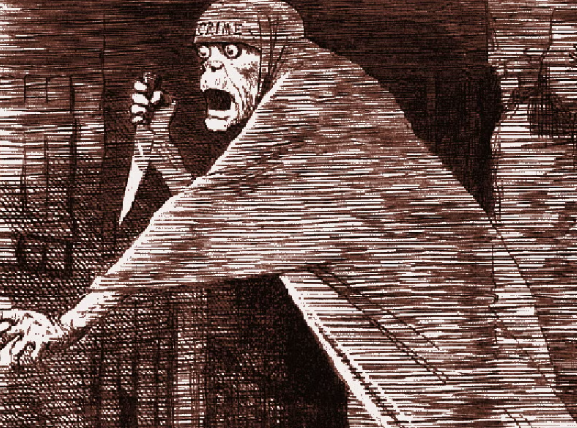Jack the Ripper: The Unsolved Case That Terrorized Victorian London

Jack the Ripper: The Unsolved Case That Terrorized Victorian London
In the late summer of 1888, fear gripped the impoverished Whitechapel district of East London as a series of gruesome murders shook the community to its core. The killer was never caught, the victims were all vulnerable women, and the brutality of the crimes was unprecedented. The name that would come to define the mystery and terror of those months: Jack the Ripper.
To this day, the identity of Jack the Ripper remains unknown, making it one of the most infamous unsolved serial murder cases in history. The case continues to fascinate historians, criminologists, and true crime enthusiasts over a century later.

The Setting: Whitechapel, 1888
During the late 19th century, Whitechapel was a densely populated, poverty-stricken area of London plagued by crime, disease, and poor living conditions. Many of its residents were homeless or struggling to survive. Prostitution was widespread, and women often turned to the streets to earn a living.
The environment created a perfect hunting ground for a killer who could prey on society’s most vulnerable with little fear of being seen or stopped.
The Victims
There were many murders in East London at the time, but five are widely believed to have been committed by Jack the Ripper. These are known as the “Canonical Five”:
-
Mary Ann Nichols – Murdered on August 31, 1888. Found in Buck’s Row (now Durward Street), her throat was slashed and her abdomen mutilated.
-
Annie Chapman – Killed on September 8, 1888. Found in the backyard of 29 Hanbury Street, her throat was cut, and her organs had been partially removed.
-
Elizabeth Stride – Murdered on September 30, 1888. Found in Dutfield’s Yard. Unlike the others, she had only a single throat wound and no further mutilation, suggesting the killer may have been interrupted.
-
Catherine Eddowes – Also murdered on September 30, 1888, just an hour after Stride. Her body was discovered in Mitre Square. Her face was mutilated and her kidney was removed.
-
Mary Jane Kelly – Killed on November 9, 1888. Found in her room at Miller’s Court. Her body was horrifically mutilated, far worse than any of the previous victims. She is considered the last canonical victim.
All five women were known to be sex workers or associated with prostitution, and they were all killed at night in public or semi-public places.

The Killer’s Signature
Jack the Ripper’s method of killing was brutal and showed an unusual degree of precision for a street killer. He typically:
-
Slashed the throats of his victims.
-
Mutilated their bodies, especially the abdomen.
-
In some cases, removed organs such as the kidney or uterus.
These acts led some investigators to believe the killer had anatomical knowledge, possibly as a butcher, surgeon, or medical student. However, no definitive profession could be assigned.
The Letters
During the investigation, several letters were sent to the police and the press claiming to be from the killer. The most famous are:
-
“Dear Boss” Letter – Dated September 25, 1888, and signed “Jack the Ripper,” this was the first time the name appeared and is how the killer got his infamous nickname.
-
“Saucy Jacky” Postcard – Arrived shortly after the double murder of Stride and Eddowes.
-
“From Hell” Letter – Sent with a half-preserved human kidney to a member of the Whitechapel Vigilance Committee. This letter is regarded by many as the most likely to have been genuinely written by the killer.
The authenticity of all these letters is debated. Some are believed to be hoaxes created by journalists or citizens seeking attention.

The Investigation
Scotland Yard and the City of London Police launched an intense manhunt to catch the killer. Hundreds of suspects were questioned, and many leads were pursued, but the investigation was hindered by:
-
Lack of forensic technology (DNA, fingerprinting, etc.).
-
The chaotic nature of the crime scenes.
-
Poor cooperation between different police departments.
-
The general distrust of police among Whitechapel residents.
Despite offering rewards and conducting extensive interviews, the police never charged anyone with the crimes.
Key Suspects
Over the years, dozens of suspects have been named, including:
-
Montague John Druitt – A barrister and teacher who committed suicide in December 1888.
-
Aaron Kosminski – A Polish immigrant and known schizophrenic who lived in Whitechapel.
-
Michael Ostrog – A Russian-born criminal and con man.
-
Prince Albert Victor – The Duke of Clarence and member of the royal family, though this theory is widely discredited.
-
Walter Sickert – A British painter, theorized by author Patricia Cornwell to be the killer (a theory criticized by many experts).
No suspect has ever been definitively proven to be Jack the Ripper.
The End of the Murders
After Mary Jane Kelly’s murder on November 9, 1888, the killings suddenly stopped. Some believe the killer died, was arrested for another crime, emigrated, or simply chose to stop. The silence was as mysterious as the murders themselves.

Legacy and Cultural Impact
Jack the Ripper became one of the first media-driven murder cases, fueled by sensationalist newspaper coverage that used lurid headlines and graphic descriptions to sell papers. The case helped define the modern idea of the serial killer, a term that would not be coined until nearly a century later.
The mystery has inspired:
-
Countless books, films, and TV shows.
-
Conspiracy theories ranging from Freemasons to royal cover-ups.
-
A thriving field of study called “Ripperology”, with amateur and professional sleuths trying to uncover the truth.
Jack the Ripper remains a symbol of the unknown monster—a killer who seemed to vanish into the fog of Victorian London.
Conclusion
More than 135 years after the Whitechapel murders, Jack the Ripper’s identity and motive remain shrouded in mystery. His crimes not only terrorized a city but also marked a turning point in criminal investigation and public obsession with violent crime.
Though many believe we will never know who Jack the Ripper truly was, his legacy lives on as a grim reminder of the darkness that can lurk behind the veil of ordinary life, and how even the most horrific of crimes can remain forever unsolved.





